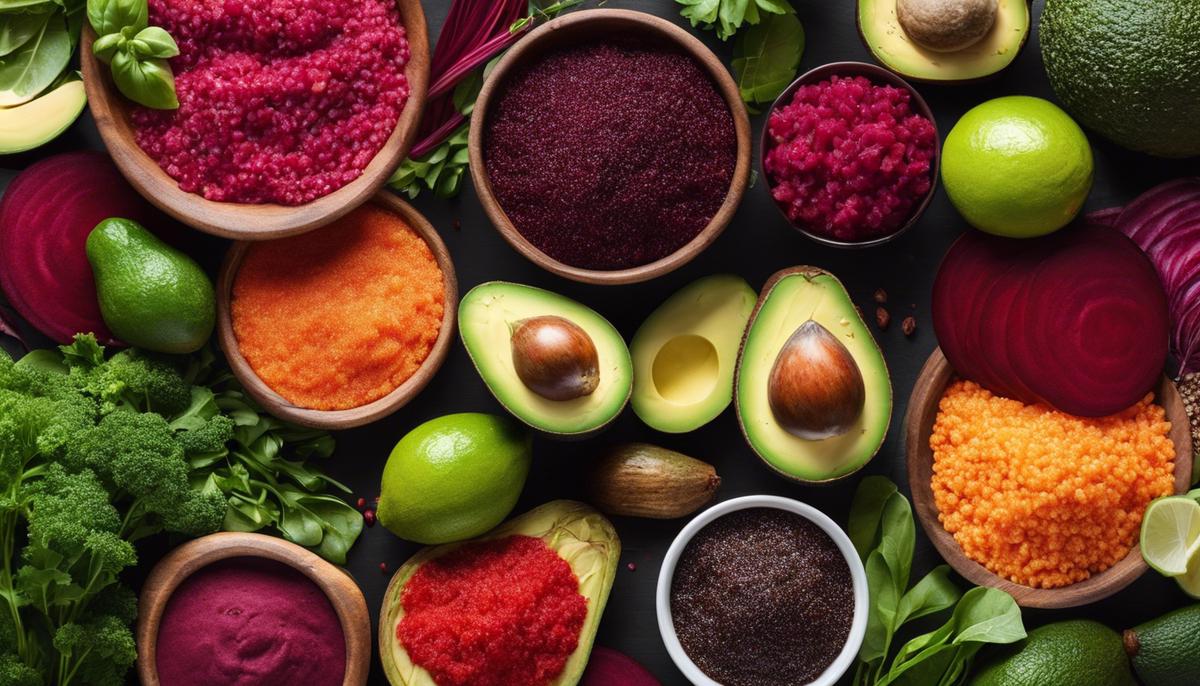The culinary landscape is undergoing a vibrant transformation, one that is lush with the verdant offerings of the earth. A plant-based diet once considered the fringes of gastronomy, is now taking center stage, inviting both chefs and food enthusiasts to explore the nuanced tapestry of flavors, textures, and aromas that nature so generously provides. Venturing into this world means discovering the delicate complexity of nutty grains, the rich silkiness of avocados, and the deep, sweet earthiness of beets. It’s about expanding one’s palate and embracing the boundless possibilities that come from the earth’s bounty, ensuring that with every bite, there is both pleasure and sustenance.
The Flavorful World of Plant-Based Ingredients
The Plant-Based Palette: Elevating Culinary Creativity
In the wondrous world of culinary arts, there lies an unexplored frontier that stretches beyond the traditional pasture; it’s the verdant expanse of plant-based ingredients. This isn’t just a trend, oh no—it’s a thrilling evolution in the gastronomic universe that tickles the taste buds and expands the horizons of amateur kitchen enthusiasts and seasoned chefs alike.
Imagine the possibilities when we dare to substitute that milk with a velvety almond or oat beverage, or when a juicy portobello mushroom takes center stage instead of a steak. It’s not about mere substitution; it’s about revolutionizing the plate with every vibrant hue and texture imaginable. The world of plants offers a treasure trove of flavors—untamed, unrefined, and unapologetic.
Take, for instance, the art of using nuts to replace dairy—cashews soaked and blended become the creamy base for sauces and cheeses that sing in silky notes of indulgence. Herbs and spices find their true partners in plant-based dishes, their flavors emboldened against the fresh backdrop provided by earth’s green bounty.
Then, there’s the visual feast. The natural brilliance of fruits and vegetables paints the plate with a spectrum of colors that can rev up appetite and excitement. The “eat with your eyes” philosophy couldn’t be truer when ruby red beetroot rests on a bed of arugula, pumpkin purée adds a sunset-orange swoosh to a plate, or avocado adds a rich green dash of creamy delight.
Not to be sidelined, let’s talk meat alternatives—your jackfruits, your lentils, your chickpeas—each wielding their unique textures and tastes. Jackfruit, with its mysterious ability to mimic pulled pork, has been a game-changer in the barbecue scene. Just marinate, spice it up, and let the smoky flavors do their mesmerizing dance. On the other hand, the simple, earthy lentil transforms into anything from meatloaf to “meatballs,” humbly boasting high protein while carrying a variety of spices on its back.
By welcoming plant-based ingredients into the kitchen, we do more than just diversify our culinary repertoire—we also tap into a vein of global culinary traditions that have celebrated these ingredients for centuries. And, of course, the bonus of health benefits, the greener the ingredient list, the happier our bodies feel about what’s on our plates.
In dazzling eatery scenes, chefs now proudly announce plant-based options, standing shoulder to shoulder with classic meaty specialties. The taste adventurers are on the lookout for the next scrumptious surprise, a new plant-based delight that they might, for a meaningful moment, mistake for their beloved traditional flavors.
In essence, inviting plant-based ingredients into the heart of the culinary industry isn’t just about keeping pace with dietary preferences or seeking better health. It’s about expanding our understanding of how extraordinary and satisfying every meal can be. Taste, after all, knows no bounds, and when armed with an arsenal of plants, the culinary possibilities are endless. So, let’s chop, blend, and sauté our way into a future where every bite is a celebration of nature’s bountiful creativity. Welcome to the plant-based renaissance—your taste buds will thank you.
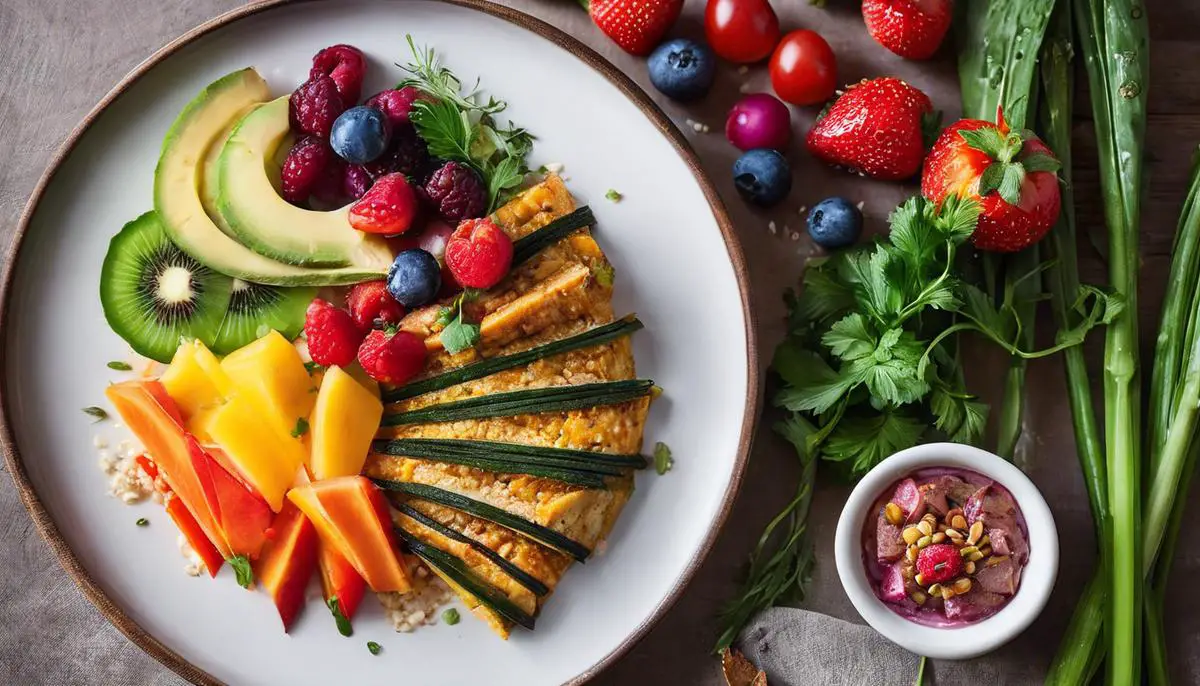
Plant-Based Cooking Techniques
Ah, the plant-based revolution—the culinary playground for flavor artists and technique wizards. There’s so much more to explore beyond replacing animal-based ingredients and admiring the color palettes of our fruits and vegetables. Let’s get creative and dive into some innovative cooking techniques that elevate plant-based dishes to gastronomical artworks.
Sous Vide Sensations:
The sous vide method isn’t just for premium cuts of meat—it’s a game changer for vegetables as well. Cooking veggies like carrots or beets at lower temperatures in a water bath can bring out an unparalleled sweetness and texture. A perfectly tender and flavorful bite every time. Plus, sous vide cooking locks in nutrition, making those plant-based dishes not just pretty, but powerful.
Smoking Charms:
Smoked foods aren’t exclusive to the meat lovers out there. Smoking can impart a depth of flavor to plant-based ingredients that’s seriously mind-blowing. Imagine smoked tofu that has absorbed all the heady aromas of applewood or the unexpected delight of smoked eggplant puree. A hint of smokiness might just be that secret weapon for rich, umami-laden plant-based cuisine.
Flash Pickling Pizzazz:
Gone are the days when pickling was a long, drawn-out affair. Flash pickling is an ace up the sleeve, bringing a swift punch of acidity and brightness to dishes. It’s an instant flavor lift for salads, sandwiches, or toppings. A quick mix of vinegar, water, sugar, and salt, and veggies like radishes or onions transform into crisp, tangy accents that wake up the palate.
Molecular Gastronomy Magic:
Who says decadent foams, spheres, and gels are for high-end dining alone? Molecular gastronomy techniques have crept into the home kitchen, giving plant-based dishes a touch of modernist whimsy. Agar-agar can create vegan caviar that bursts with flavor or conjure up gels that add an intriguing texture to the plate. These techniques aren’t just fun—they genuinely expand the horizons of what plant-based cooking can be.
Searing Heat:
A blazing hot pan can do wonders for the humblest of veggies. It’s about going beyond a light sauté to a full-on char that brings out a sweet, caramelized exterior while keeping the interior delightfully crunchy. A high-heat sear can give cauliflower or Brussels sprouts a meaty quality that’s sure to satisfy even the most ardent carnivores at the table.
Fermentation Fascination:
The process of fermentation isn’t just for kimchi and sauerkraut. It can introduce a whole new dimension of flavor to plant-based dishes. The act of fermenting can not only boost the gut-friendly bacteria but can elevate the taste profile, adding layers of complexity. Think about tangy, fermented cashew cheese or the deep, savory notes of miso applied in innovative ways to plant-based meals.
In the wondrous world of plant-based cooking, innovation isn’t just an option—it’s essential. These techniques are but a few splashes of color on the vast canvas of culinary creativity. So why not fire up that sous vide machine, get that smoker going, or play with pickles? It’s time to explore the endless spectrum of textures and flavors that plants have tucked away, just waiting to be discovered. And remember, when crafting your plant-based masterpiece, the secret ingredient is always a generous dash of daring.
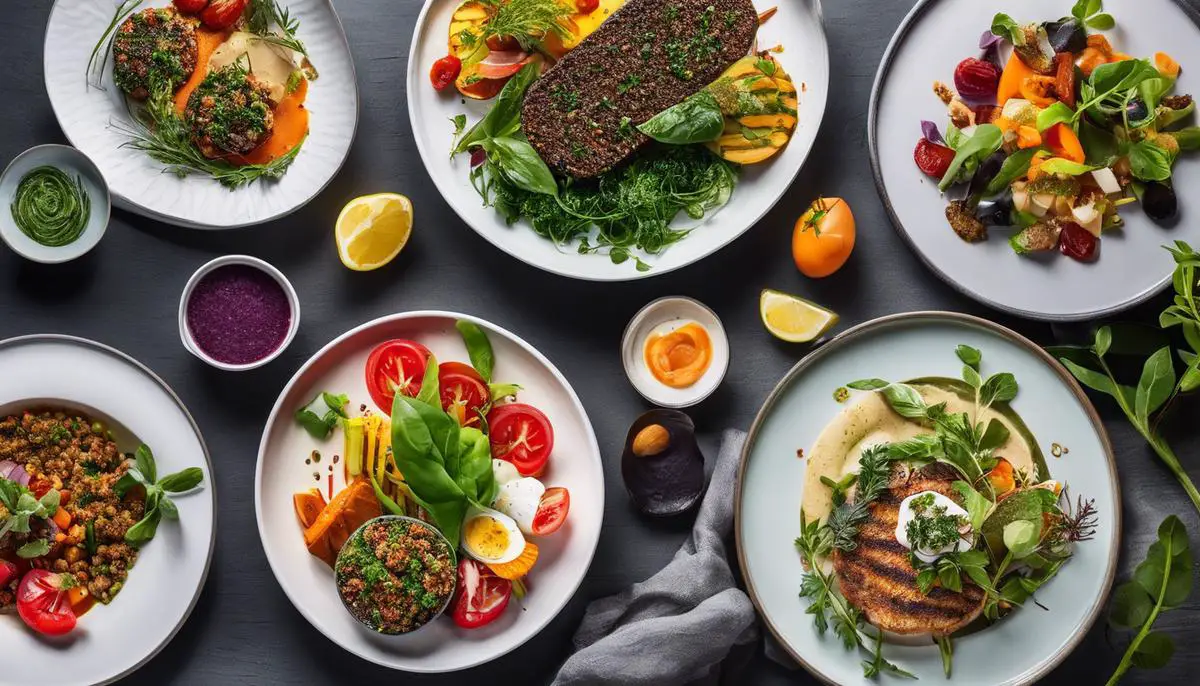
The Nutritional Value of Plant-Based Diets
Thriving with a Plant-Based Lifestyle: The Wholesome Path to Vitality
Every bite we take is a statement about our health, our planet, and our palate. A plant-based lifestyle, blossoming with a bouquet of whole grains, legumes, nuts, seeds, fruits, and vegetables, is more than just a culinary trend – it’s a pathway to a thriving state of well-being. So, let’s peel back the husk and reveal the cornucopia of health benefits that come with embracing plants at the heart of our plates.
Embarking on a plant-based journey can fortify the body’s defenses with a powerful shield of antioxidants, those valiant warriors against oxidative stress. This internal battalion is found in abundance in the colorful array of plant foods, which work tirelessly to neutralize free radicals, guarding our cells from the wear and tear of daily life.
A symphony of fiber found in beans, berries, and whole grains not only keeps the digestive chorus on tempo but also helps conduct a steady blood sugar level, reducing the erratic spikes and dips that can lead to cravings and mood swings. Fiber also serves as a prebiotic entree for our gut bacteria, promoting a balanced microbial community that supports everything from immune function to mental health.
Rewarding our hearts, a plant-based regime can lower the curtain on harmful cholesterol and saturated fats prevalent in animal products. Replacing these with the unsaturated fats and heart-healthy omega-3s in plants like flaxseeds and walnuts creates a harmonious arrangement for cardiovascular health, potentially reducing the risk of heart disease.
Moreover, the high nutrient density of plant-based foods offers a marquee of minerals and vitamins without the excessive calorie load. This pairing can be a ticket to better weight management, with natural portion control and a feeling of satiety that can help curb overindulgence.
Another virtuoso performance is the plant-based diet’s potential role in combating certain chronic conditions. The medley of fiber, phytochemicals, and lower fats can contribute to a lower risk of type 2 diabetes, hypertension, and certain types of cancer, allowing us to dance through life with fewer health burdens.
Lastly, embracing a plant-based way of living is like joining an ensemble where every meal is a chance to sustain the environment. Less resource-intensive than raising animals, plants demand a smaller water footprint and generate fewer greenhouse gases, making each plant-rich meal a gesture of care for our planet’s future.
For those concerned about meeting all nutritional needs, a thoughtful plant-based menu can deliver all essential proteins, vitamins, including B12 through fortified foods, and minerals when a variety of foods and colors paint our plates each day.
In the grand theater of life’s feasts, a plant-based diet is the virtuoso performance that resonates with vibrant health, beckoning us to take a seat at the table of longevity and joy in a symphony of flavors that nurtures both body and spirit. Let’s raise a glass (of freshly-squeezed vegetable juice) to a life brimming with zest, vivacity, and the wholesome embrace of Mother Nature’s bountiful harvest. Bon appétit!
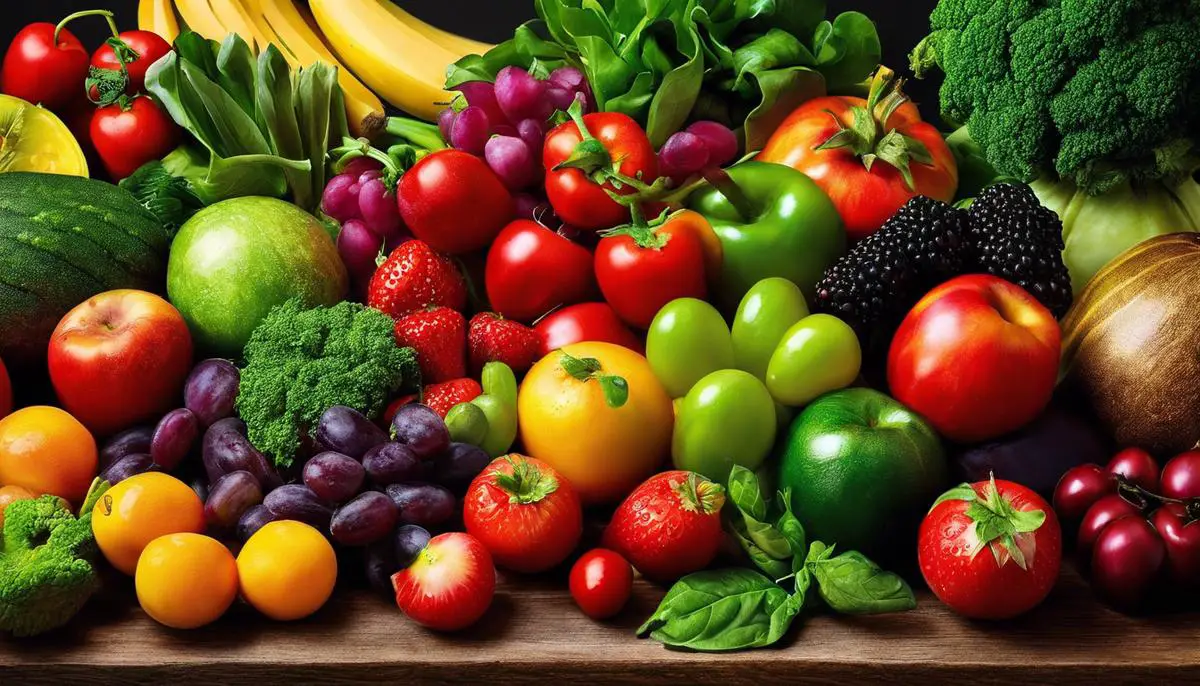
Plant-Based Diet and the Environment
Transitioning from the myriad of health and culinary benefits of plant-based ingredients, let’s explore how a plant-based diet stands out as a champion of sustainability and a balm for our precious planet.
Dig a ladle into the rich stew of environmental science, and you’ll scoop out a simple truth: raising animals for food is resource-intensive. By choosing to fill your plate with plant-based foods, you’re effectively reducing the carbon hoofprint — yes, cows have hoofprints, not footprints — of your meals. The reason? Plants require less water and land to grow than livestock, and they emit significantly fewer greenhouse gases.
Now think of energy — not the vigor you need to whip up a magnificent quinoa salad, but the energy to produce food. Plants are the direct solar panels of our food system, harnessing the sun’s energy with awe-inspiring efficiency. In contrast, animal agriculture is like that clunky, old generator guzzling fuel to churn out less energy than it consumes. By going plant-based, we’re cutting out the middle-cow, connecting to Earth’s power source in the most direct way.
And it’s not just about carbon. Biodiversity is the spice of life on Earth, and animal agriculture is like a blender homogenizing swathes of unique flora and fauna into pastures and feedlots. A plant-based diet encourages a more varied use of land, which can help protect the diverse array of life this rock we call home has cooked up over billions of years.
But let’s not forget about the leftovers. Food waste is a rotten issue, quite literally. Plant-based diets encourage the use of whole veggies — beet greens, carrot tops, and all — meaning fewer scraps are sent to landfills to decompose and belch out methane. And if scraps do occur, they break down beautifully in the compost bin, ready to nurture the next crop of mouth-watering produce.
Finally, sip on the notion of water — the broth of life. Producing a single pound of beef can soak up thousands of gallons like a gargantuan sponge. Plant-based foods, in comparison, are more like a light summer drizzle. By opting for plants, we nourish our bodies without parching our planet.
So let’s raise our glasses, filled with a sustainable, plant-based elixir, to the simple, powerful choices simmering on our stoves and singing from our plates. Together, we’re not just crafting bold and innovative cuisines; we’re stirring a revolution in our world one delicious, plant-based bite at a time. Cheers to good health, tantalizing taste, and a thriving planet!

Global Cuisines Embracing Plant-Based Eating
Diving into the World of Plant-Based Cuisines: A Global Tapestry of Flavors and Techniques
Imagine this: a table set with dishes from corners of the globe, each telling a story, a cultural whisper from ages past. Take a seat and let’s journey through how different cultures are weaving the magic of plant-based eating into their gastronomic identities. Each region brings a bounty of natural ingredients to the table, educating palates and feeding souls with greener, kinder choices.
Asia’s plant paradise has long celebrated the likes of tofu and tempeh, with their remarkable ability to soak up savory sauces and spices. But look closer, and you’ll discover Korean temple cuisine, where balance and seasonality reign supreme, or Vietnam’s vibrant array of fresh rolls and salads. There’s a dance of flavors – a harmony of sweet, sour, salty, and bitter that honors the plant kingdom with every bite.
Moving west, the Middle East and Mediterranean regions unveil their plant-strong traditions. Hummus and baba ghanoush, staples that adorn many a meze platter, showcase the luxurious textures that can be achieved with plant ingredients. Stuffed vine leaves, falafel, and tabbouleh whisper tales of the earth, with grains and legumes providing substance and satisfaction.
Africa’s cooking pots simmer with tradition, where Ethiopian injera serves as a tangy canvas for an array of legume and veggie stews. West African cuisine sings with starchy roots, okra, and black-eyed peas, all pulsing with color and life force. Every dish is a chapter of resilience and resourcefulness, grounded in the deep respect for nature’s gifts.
Across the Atlantic, Latin American chefs are crafting ceviches with hearts of palm, jackfruit carnitas, and plantain-based dishes that echo the beat of the rainforest and the bustle of the pueblos. Beans and corn, indigenous staples, remind us of ancient civilizations that thrived on earth’s bounty.
Europe, with its variety of food philosophies, isn’t far behind in the plant revolution. Innovative chefs in Nordic countries are foraging and fermenting, creating complex flavors with what the wild offers. Italian kitchens are turning out eggplant parmesan and Sicilian caponata that would make any nonna proud, proving that comfort food need not be heavy on cream and cheese.
Echoing these global tastes and techniques are the modern marvels of plant-based cooking taking shape in professional kitchens and home cookeries alike.
Imagine a paella, magnificently golden with turmeric and saffron but rooted in the plant kingdom with a variety of vegetables and legumes. It’s a dish that tells a story of adaptation and creativity, a testament to the power of plants to infuse tradition with new life.
With every plant-based dish from every corner of the world, there’s a realization – food isn’t just about sustenance, it’s about connection. It’s about crossing borders without leaving the kitchen and sharing stories that nourish both body and spirit.
Finally, as we taste these vibrant offerings, let’s not forget the less glamorous but equally vital ingredients that hold the culinary world together. Salt, water, and the alchemy of heat – without these, the spells cast by the world’s greatest chefs would falter. These unsung heroes allow the plant-based treasures of the earth to truly shine.
As our forks dive into the next plant-based signature dish or a humble, home-cooked meal, let’s toast to the joy that is discovery, the unity that is dining, and the love that is cooking. Bon Appétit, or as it’s warmly said around the globe.
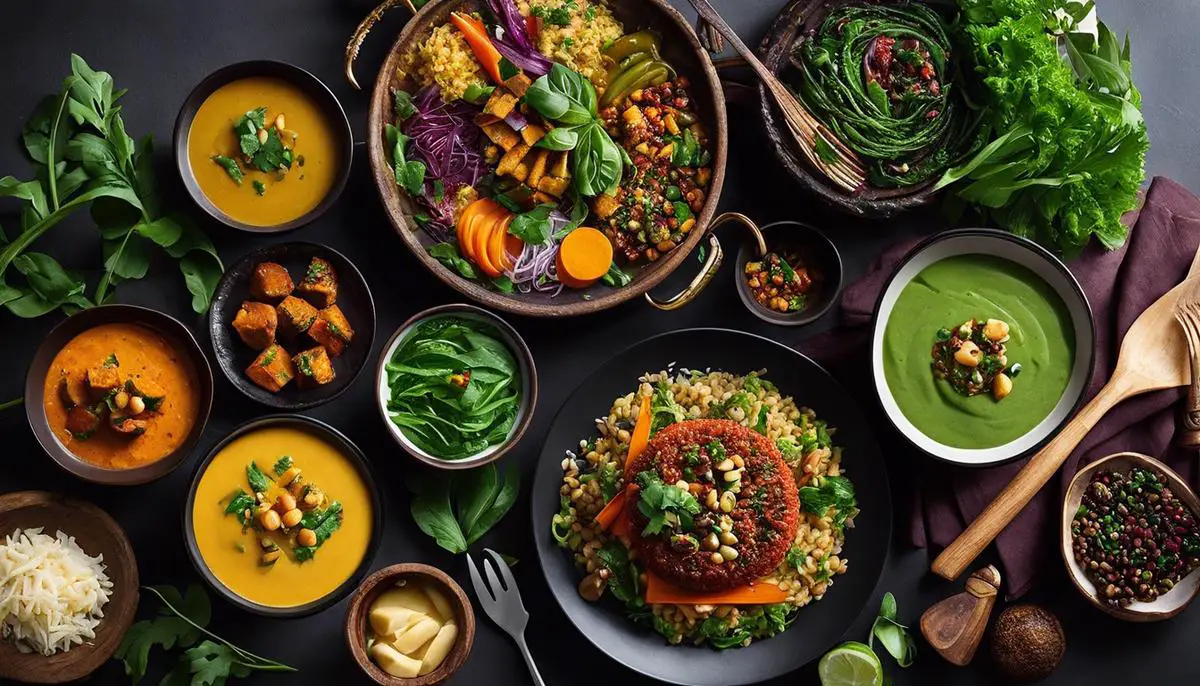
As we’ve journeyed through the tantalizing realms of plant-based cuisine, from the robust flavors and innovative cooking techniques to the far-reaching health and environmental benefits, it is clear that a diet rich in plants is more than a fleeting trend—it’s a holistic approach to living. Embracing plant-based eating is not only an act of pleasure but one of responsibility; a commitment to nourish not only our bodies but the world we inhabit. With the colorful tapestry of global cuisines as our guide, we are reminded that the language of food is universal, and the shift towards plant-based eating is a melody harmonizing tradition with progress, a testament to the endless creativity and adaptability of the human spirit.
